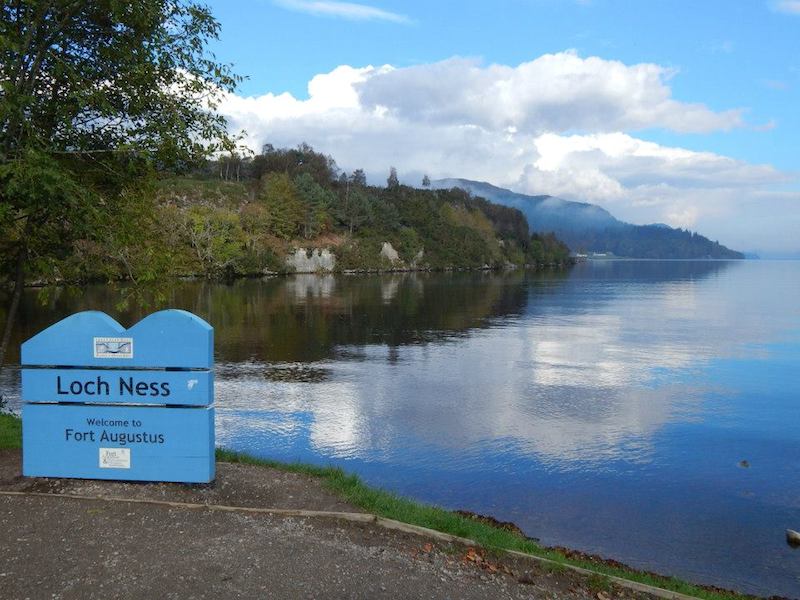
Edinburgh (TAN): The new Pokémon Detective Pikachu film features the picturesque Scottish highlands around Glen Nevis as well as Bridge of Orchy in Argyll that will perhaps inspire several visitors to visit those locations.
Scotland, in any case, is a favourite with those interested in mythical beasts and legends and its folklores have fascinated visitors for ages.
Here’s a bit of trivia: Scotland’s national animal is the unicorn!
If you’re planning to visit Scotland in search of such mythical beasts, here’s where you need to look for:
[ALSO READ: Hippie in Heels travel blogger Rachel Jones passes away]
Unicorns
Unicorns have been linked to Scotland for centuries and were used as an early form of the Scottish coat of arms by William I in the late 1300s.
As well as inspiring a form of currency in the 15th and 16th century in Scotland, their distinctive appearance left a legacy on the country’s cities and towns, many of which, to this day, still bear unicorn heraldry.
Statues and heraldic images of unicorns can be found outside the National War Museum at Edinburgh Castle, at the Queen’s Gallery in the Palace of Holyroodhouse and on the fountain in the courtyard at Linlithgow Palace and atop the Mercat Cross in Dunfermline, Jedburgh, Melrose, Culross, Crail and Cupar.
[ALSO READ: Here’s why these five people are heading to this village called Grottole in Spain]
At the Stirling Castle, you will find the beautiful Mystic Hunt of the Unicorn tapestry while in Dundee you’ll find the country’s only water-based unicorn. Docked in the River Tay is HM Frigate Unicorn, Scotland’s only surviving example of a wooden warship and one of the six oldest ships in the world.
Nessie
Probably the most “sighted” of Scotland’s monsters. The legends of what lies beneath Loch Ness has become a tourist sensation.
Since the sixth century, there have been many unsettling accounts of a strange, dinosaur-shaped creature who lives in the Loch. But despite many attempts, to this day the existence of Nessie remains one of the world’s most fascinating mysteries.
Kelpies
This shape-shifting water spirit is another creature associated with Scotland’s lochs, although legends suggests its presence possesses a far more sinister outcome.
[ALSO READ: Niagara Falls goes green with all-electric Maid of the Mist ferries]
Often appearing as a horse, the Kelpie emits a plaintive cry to attract its prey or lures onlookers to join it for a ride on its back before violently plunging them down to a watery grave.
For proof of their existence, pay a visit the grounds of the ruined Vayne Castle in Angus. Here you will find a hoof-shaped imprint on sandstone near the river bank left behind by this supernatural predator.
It is said that in the early morning or at dusk, if you are still and listen carefully enough, you might just catch its mournful song floating along the gently flowing current. Check out the two 30-metre-high sculptures of the breed at The Helix.
Selkie
Largely associated with the waters of Orkney and Shetland, a Selkie (the Orcadian dialect for seal) refers to a creature that can capture the hearts of human beings.
Resembling a seal in the water and taking human form on land, the graceful selkie entrances its admirers, and then disappears forever into the ocean, leaving behind a few broken hearts.
It is thought that both male and female selkies can elegantly emerge from the water as beautiful people and have powerful seductive powers over humans. After finding love and spending years on land, ‘selkie folk’ will always crave a return to the sea, their rightful home.
Wulver
While werewolves have earned a reputation as a fearsome predator, a half-man, half-wolf transformed by the light of a full moon, their Shetland equivalent, the Scottish Wulver, was known as a kind-hearted spirit, who generously helped the needy and unfortunate, feeding the hungry and guiding the lost home.
[ALSO READ: Here’s how an Air India Express aircraft with 102 on board ended up in a drain]
According to legend, the wulver evolved from wolves and was not the victim of an unfortunate curse like the fabled Werewolf. The Wulver is said to live by itself in a cave on Shetland with the last reported sighting taking place over a 100 years ago.




